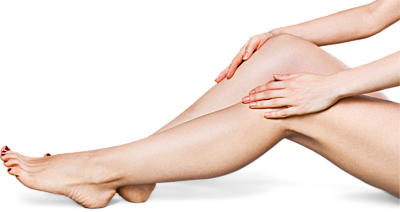Lots of people, not just dancers, suffer from shin splints, and how to cure shin splints is a question a lot of people are asking.
This post may contain affiliate links, which means that the owner of this website will get a small commission on qualifying purchases.
What are Shin Splints and how do you get Shin Splints?
Shin splints, which are also known as medial tibial stress syndrome, are defined as pain along the inner edge of the shin bone or tibia. A person will feel pain in the lower region of the leg between the knee and the ankle.
Shin splints are the most common leg injury and affect mostly runners, dancers, and military personnel undergoing basic training. Shin splints are generally caused by the effects of repeated running and jumping.
It usually happens when an individual suddenly ramps up their workout intensity, or runners change the surface that they run on. Shin splints can also happen when doing high-impact exercises on an unyielding surface like concrete.
Shin splints can also be caused by overusing your lower leg muscles and bone tissue, or the ankle joint rolling inwards too far as the running foot hits the ground (overpronation).
Excessively tight calf muscles can also lead to shin splints, so make sure to stretch out those calves after exercising.
How To Cure Shin Splints
- Ice your shins. Ice several times a day for 20 to 30 minutes a day every 3 to 4 hours for 3 days or until the pain is gone.
- Do stretching exercises, especially over the front part of the shin.
- Work with a physical therapist.
- Rest your body, as you will need time to heal. If you carry on jumping or running with shin splints, the pain will worsen.
- Try these copper compression calf sleeves.
- Take an anti-inflammatory. Aspirin, ibuprofen, naproxen, and similar type drugs will help with the pain and swelling. Just be aware these drugs do have side effects and should be used in moderation.
- Visit your doctor for a thorough physical exam. He can see how you run and check for problems. He may also do X-rays to check for fractures. In rare cases, you may need an operation if you have a severe stress fracture that caused the shin splints in the first place.
- Use orthotics or an arch support in your shoes to support your arches. In a lot of cases, shin splints are caused by incorrect alignment of the foot like Collapsing Arches
 .
. - Your doctor will recommend some exercises for range of motion. Make sure you do them.
- Try a neoprene sleeve around your calf to warm and support your leg.
- Grab The 7 Step Shin Splints Treatment Plan by clicking here.
Here is a great massage you can try to help easy painful shin splints.
How Do I Know When My Shin Splints Are Cured?
You will know you are better when your injured leg is as flexible as your other leg, and your injured leg feels just as strong as your other leg.
You also won’t feel any pain when running or jumping.
Have you had shin splints?
Please share your experiences below.


Great article.I learnt a lot. I used to get shin splints a lot, but since then, and because of that, I switched to a different activity that wasn’t so jarring.
As a dancer, do you find shin splints an issue?
By the way – great site, and great to see you drawing on all those years experiences.
Shin splints are supposedly quite common in dancers, but I haven’t seen much of this injury all in all these years, and no I have never had them either.
Hello Michel!
Great article covering the issue of shin splints. I can totally relate to this, as I have been an active sportsman since my teenage years. However, I feel that for some reason, sports never gave me any serious injuries. I only experienced knee pains and shin splints when I was serving the Army for several years.
Your tips for taking care of shin splints are very helpful indeed. I will definitely take note of all the treatments that you have mentioned. I thought I was very fit, prior to enlisting into the military, hence I was not worried for any possible leg problems.
I wonder what caused this problem. Could it be that certain tendons and ligaments in my lower leg have been exposed to too much stress? I do not remember getting any bone crushing injuries during my service.
Thanks and great site =)
Thanks for the comment Farhan. A sudden increase in exercise is usually the cause of shin splints and going into military training usually does this, as a person is pushed long and hard, and it is not what they are used to.
Never heard of shin splints before, so I enjoyed learning about it. Sounds painful. I have been running for years so i guess I am lucky (so far) not to have had a shin splint. Think you have lots of great tips on how to cure shin splints faster. And anyone who suffers from them would benefit from this site as your tips are easy to read and thorough.
Thanks for the comment Jenny and best of luck with your running.